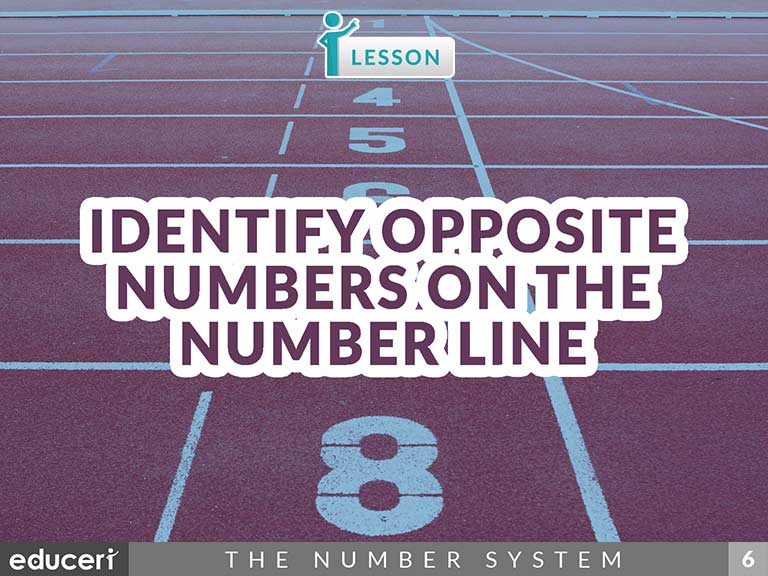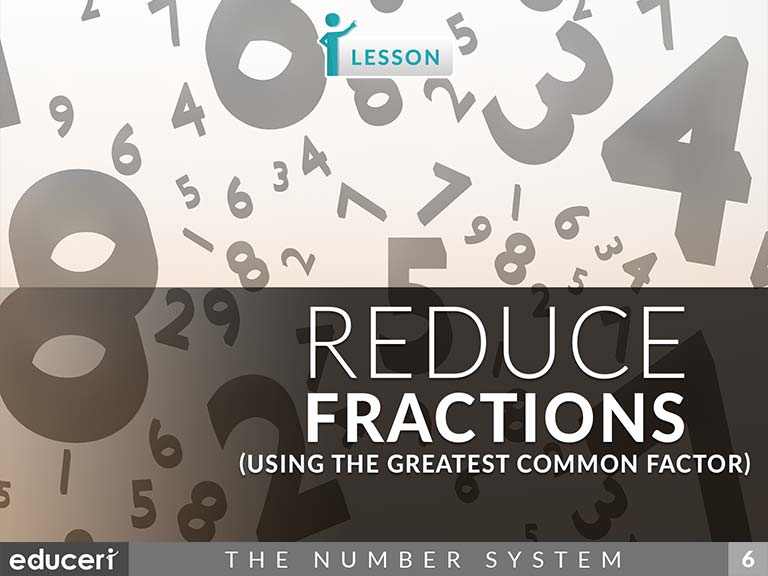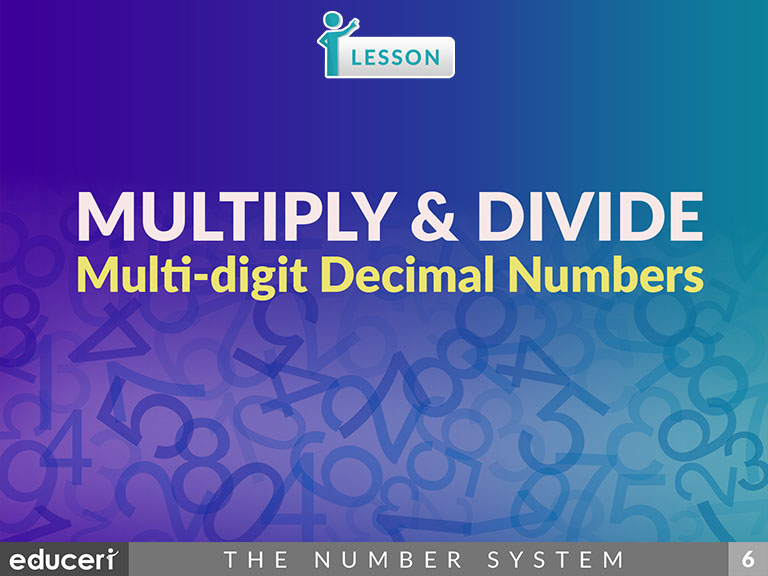All Lessons

Calculate Unit Rates
This ratios and proportional relationships lesson teaches students how to calculate unit rates. The lesson includes research-based strategies and strategic questions that prepare students for assessments. In this lesson, students will find various unit rates of real-world word problems.
Share This Lesson

Solve Problems Involving Proportional Relationships
(B) Apply qualitative and quantitative reasoning to solve prediction and comparison of real-world problems involving ratios and rates
6.5.A(A) Represent mathematical and real-world problems involving ratios and rates using scale factors, tables, graphs, and proportions
6.RP.3 Use ratio and rate reasoning to solve real-world and mathematical problems, e.g., by reasoning about tables of equivalent ratios, tape diagrams, double number line diagrams, or equations.
6.RP.3.A6.RP.3.A Make tables of equivalent ratios relating quantities with whole-number measurements, find missing values in the tables, and plot the pairs of values on the coordinate plane. Use tables to compare ratios.
This ratios and proportional relationships lesson teaches students how to solve problems involving proportional relationships. The lesson includes research-based strategies and strategic questions that prepare students for assessments. In this lesson, students will identify a given ratio in a word problem, then the unknown ratio. They will represent the proportional relationship in a table and generate an equivalent ratio to solve for the unknown. Finally, they will interpret the solution.
Share This Lesson

Solve Problems Involving a Percent of a Quantity
6.RP.3 Use ratio and rate reasoning to solve real-world and mathematical problems, e.g., by reasoning about tables of equivalent ratios, tape diagrams, double number line diagrams, or equations.
6.RP.3.A6.RP.3.A Make tables of equivalent ratios relating quantities with whole-number measurements, find missing values in the tables, and plot the pairs of values on the coordinate plane. Use tables to compare ratios.
6.RP.3.C6.RP.3.C Find a percent of a quantity as a rate per 100 (e.g., 30% of a quantity means 30/100 times the quantity); solve problems involving finding the whole, given a part and the percent.
This ratios and proportional relationships lesson teaches students how to solve problems involving a percent of a quantity. The lesson includes research-based strategies and strategic questions that prepare students for assessments. In this lesson, students will solve problems using a percent of a quantity. This lesson uses real-world word problems. The lesson also includes an optional strategy development page for teachers who would like to formally introduce the strategy before proceeding to Skill Development.
Share This Lesson

Show Common Decimal Numbers as Percents
Share This Lesson

Solve Problems Involving Rates
6.RP.1 Understand the concept of a ratio and use ratio language to describe a ratio relationship between two quantities. For example, "The ratio of wings to beaks in the bird house at the zoo was 2:1, because for every 2 wings there was 1 beak." "For every vote candidate A received, candidate C received nearly three votes."
6.RP.36.RP.3 Use ratio and rate reasoning to solve real-world and mathematical problems, e.g., by reasoning about tables of equivalent ratios, tape diagrams, double number line diagrams, or equations.
6.RP.3.A6.RP.3.A Make tables of equivalent ratios relating quantities with whole-number measurements, find missing values in the tables, and plot the pairs of values on the coordinate plane. Use tables to compare ratios.
6.RP.3.B6.RP.3.B Solve unit rate problems including those involving unit pricing and constant speed. For example, if it took 7 hours to mow 4 lawns, then at that rate, how many lawns could be mowed in 35 hours? At what rate were lawns being mowed?
This algebra and functions lesson focuses on solving problems involving rates. The lesson includes research-based strategies and strategic questions that prepare students for assessments. In this lesson, students read the problem, identifying the given rate and the given and unknown quantities of the other rate. Then, they set up the proportion and solve it by cross-multiplying. Finally, they interpret the solution. In addition to the lesson, there are four pages of Independent Practice and review with questions modeled after current adaptive testing items.
Share This Lesson

Calculate a Percent of a Quantity
This number sense lesson focuses on calculating a percent of a quantity. The lesson includes research-based strategies and strategic questions that prepare students for assessments. In this lesson, students read the question and identify the percent and quantity. Then, they calculate the percent of a quantity by changing the statement into a multiplication problem and multiplying the quantity by a percent. Finally, they interpret the percent of the quantity. In addition to the lesson, there are ten pages of Independent Practice and Periodic Reviews with questions modeled after current adaptive testing items.
Share This Lesson

Add & Subtract Multi-Digit Decimals
This number system lesson teaches students how to add and subtract multi-digit decimals. The lesson includes research-based strategies and strategic questions that prepare students for assessments. In this lesson, students will solve multi-digit addition and subtraction problems. The focus of this lesson is correctly arranging problems based on place value before performing the standard algorithms for addition or subtraction. This lesson also includes a variety of real-world examples and word problems for students to complete.
Share This Lesson

Represent Quantities Using Positive and Negative Numbers
This number system lesson teaches students how to represent quantities using positive and negative numbers. The lesson includes research-based strategies and strategic questions that prepare students for assessments. In this lesson, students expand their knowledge of positive and negative numbers. Students will plot given real-world values on a number line and explain their meaning. This lesson should be taught after lesson 6.NS.6.1 Describe positive and negative numbers.
Share This Lesson

Identify Opposite Numbers on the Number Line
This number system lesson teaches students how to identify opposite numbers on the number line. The lesson includes research-based strategies and strategic questions that prepare students for assessments. In this lesson, students will identify numbers and their opposites on number lines. This is intended to expand upon students’ knowledge of positive and negative numbers.
Share This Lesson

Identify the Location of an Ordered Pair
This number system lesson teaches students how to identify the location of an ordered pair. The lesson includes research-based strategies and strategic questions that prepare students for assessments. In this lesson, students will identify the location of ordered pairs on the coordinate plane. This lesson includes plotting numbers on all four quadrants of the coordinate plane.
Share This Lesson

Describe Positive & Negative Numbers
This number system lesson teaches students how to describe positive and negative numbers. The lesson includes research-based strategies and strategic questions that prepare students for assessments. In this lesson, students will be introduced to negative numbers. Students will begin to develop a sense of what negative numbers mean.
Share This Lesson

Order Fractions and Mixed Numbers on a Number Line
This number sense lesson focuses on ordering fractions and mixed numbers on a number line. The lesson includes research-based strategies and strategic questions that prepare students for assessments. In this lesson, students place each fraction or mixed number (from a group of four) on the number line one at a time by reading each number aloud, determining the sign and value of the whole number or fraction, and determining the denominator and numerator. Finally, they order the numbers from least to greatest or greatest to least using the number line. In addition to the lesson, there are sixteen pages of Independent Practice and Periodic Reviews with questions modeled after current adaptive testing items.
Share This Lesson

Reduce Fractions (Using the Greatest Common Factor)
This number sense lesson focuses on reducing fractions. The lesson includes research-based strategies and strategic questions that prepare students for assessments. In this lesson, students find the factors of the numerator and denominator. Then, they identify the greatest common factor (GCF) and write it down. Finally, they reduce the fraction by dividing the numerator and denominator by the GCF and interpreting the reduced fraction. In addition to the lesson, there are five pages of Independent Practice and Periodic Reviews with questions modeled after current adaptive testing items and 10 flashcards for reduced fractions.
Share This Lesson

Plot Points on a Coordinate Plane
This geometry lesson covers how to plot an ordered pair on a coordinate plane. The lesson includes research-based strategies and strategic questions that prepare students for assessments. In this lesson, students will learn how to determine the x-coordinate and the y-coordinate, and then plot the coordinates on the grid.
Share This Lesson

Divide Fractions by Fractions
(A) Recognize that dividing by a rational number and multiplying by its reciprocal result in equivalent values
6.3.B(B) Determine, with and without computation, whether a quantity is increased or decreased when multiplied by a fraction, including values greater than or less than one
6.3.E(E) Multiply and divide positive rational numbers fluently.




